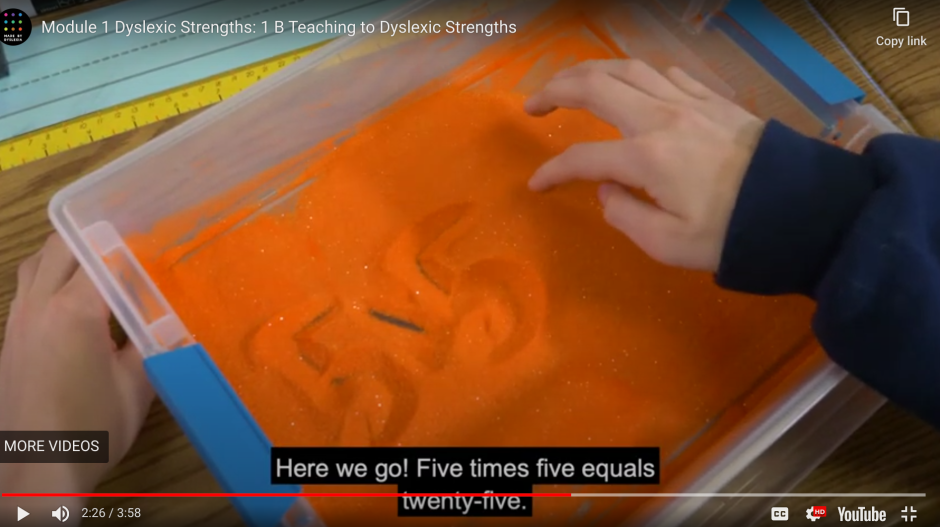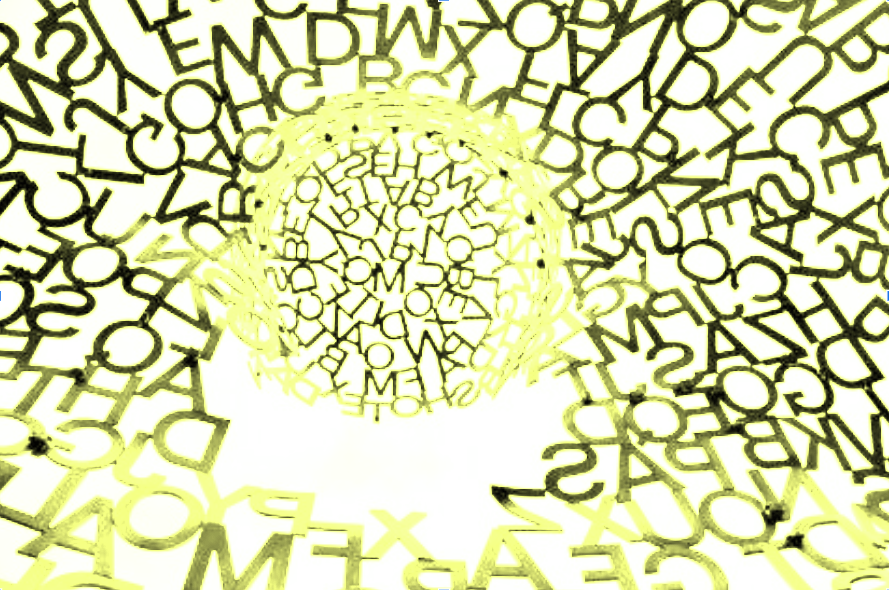Level 1 training covered “Dyslexia Awareness” now onto Level 2 – ‘Dyslexia Teaching.’ Looks of practical “Classroom strategies,” and one discussion point.
There is a signpost towards multisensory instruction and I am keen to read the research that leads to this recommendation.
With just a little investigation it is evident that the inclusion of a multisensory component is a much debated topic.
The message I get from this, and other, meta-analyses is that the multisensory variable doesn’t add or subtract much, if any, value, to phonics instruction. Teachers say it’s more engaging for some students. So I wouldn’t call it necessary nor would I recommend against it. Agree?
https://twitter.com/DrMPaff/status/1574543526532206594
Again, both Professor Maggie Snowling and Professor Joe Elliot were able to offer a view.
I read thousands and thousands and thousands of papers on intervention. I wrote to people who had made reference to multi-sensory approaches I could find nothing at all in the literature about studies where these things actually were done and made to be effective.
…of all the components of so-called reading disability interventions this is the one that probably is the least effective.
Professor Joe Elliott
Professor Snowling signposted some research that were verbal learning is weak – which it is in dyslexia – then it can be helpful to boost learning/memory using kinaesthetic modality.
The Idaho Dyslexia Handbook reports that teachers need “understand/apply in practice the rationale for multisensory and multimodal language learning techniques.” It may well be that “what is good for dyslexic learners is good for all learners.”
Listening to the videos I am having to make sure that multisensory instruction and ‘learner profiles,’ are not conflated with learning styles.
I have never seen sandboxes used as mini whiteboards.

With regards to executive functioning, organisation and sequencing, the following points were noted with regards to instructions
- Keep it brief
- Reported back
- Break directions into parts so they can be processed
- Visuals to support oral directions
- Add a movement or kinesthetic example in directions – a point to consider and reflect upon.
Again, this does seem like general advice – “what is good for dyslexic learners is good for all learners.”
Classroom strategies
Signposting the reported, if unsupported, narrative of ‘bigger picture’ strengths. The recommendations are reported as presented in the training materials.
Opportunities for dyslexic students to demonstrate, create, and observe their learning. A strategy for formative feedback was the “Fist to Five” strategy – a common Assessment for Learning strategy.

Fillable notes – a worksheet which requires learners to only add ‘key information.’
Preteaching vocabulary and there was heavy emphasis on morphology throughout the resources – mort, astro.

Oral comprehension vs. silent comprehension
One sign of dyslexia is when a student struggles to understand what they read silently but understands what is read aloud. Reading can be fatiguing for a student with dyslexia because decoding words isn’t an efficient process. (I can not find evidence to substantiate that statement).
Similar to reading comprehension, students may not perform as well independently as compared to when the content is read to them in subjects like math and science.
When children listen to teachers reading aloud, we’re modeling strong reading fluency. This modeling helps students hear the inflection, pauses, and other key features that are key for strong comprehension.
This can also be observed in Maths assessments.
Manipulating sounds and rapid automatic naming
Students who struggle with phonemic awareness skills (the sound-symbol relationship that provides the code necessary for reading) are likely dyslexic.
- Are learners able to blend sounds together to make a word?
- Are learners able to segment a word into its sounds?
- Are learners able to access knowledge on-demand. eg rapid naming colours?
- Are learners having difficulty with non-phonetic , or sight-words eg ‘was’?
- Is there a significant disparity between a learners oral and written language?
Getting words out and onto the page, use a scribe, speech to text, then write.
Spelling
Assessing a student’s spelling ability can uncover underlying issues. Letter shapes can get confused.
Struggles with spelling (for all learners) may lead to more simplistic word choices (that they can spell).
Reading

Letter sounds, call and response. Letter name, the keyword and the sound that letter makes. This is tied to the What is the “alphabetic principle.”
Syllables provide the building blocks for words because they rely on patterns, which determine the vowel sound. In the Madebydyslexia video you hear and see the teaching in action.
Open and closed syllables and REVLOC were new to me.
Fluency, the ability to effectively and efficiently read through a text and access its meaning at the same time, in importance. Decoding is only a part of reading fluency. A learner with dyslexia can lose or miss meaning because so much energy is given to reading each individual word.
Here the MadebyDyslexia resources shared strategies that I would think are useful to all learner: repeated readings and readings for the purpose of an inner narrative.
In the background of the Made by Dyslexia video, I could see the Immersive Reader highlighting the line and word as it was being read.
Comprehension – again shared strategies that I would think are universally useful to all learners: repeated readings and readings for the purpose of an inner narrative. For example, ‘Stop, think, make a link.’
Spelling letter sounds
Decoding and encoding, the sound-symbol relationship, can be taught. Across the video resources, we learn that spelling (like reading) is heavily rule based. (eg Doubling and E-drop rules)
Spelling requires the segmentation of sounds within words. Students with dyslexia should be taught to segment, or tap (or clap or stamp), the sounds in words before attempting to write the word.
Daily practice of breaking words apart and putting them back together, will allow spelling to become more intrinsic.
Spelling syllables requires hearing the individual sounds within a syllable and then mapping them to their visual symbols, letters, in the correct sequence. There are six syllable types in English. Knowledge of the syllable types takes away the guessing at how a syllable is spelled.
Spelling is wired to language in the same way we think about reading.
A learner with dyslexia can struggle with spelling for many of the same reasons they have difficulty with reading. They’re both language based.
Fluency is impacted when learners take a safer spelling route.
Comprehension is aided by teaching morphology (roots, prefixes and suffixes) the study of word parts and their meaning, to a learner with dyslexia generates an efficient pathway for spelling over 50% of the words in the English language.
Writing
As previously highlighted, get the information and ideas out. Referred to as prewriting, that is imagining, and generating ideas. Here, dyslexic learners get to “double down” on their strengths.
Drafting takes those ideas and adds structure and organisation. Here the strategy of ‘sentence combining’ was shared. Sharing idea. Exploring orders or sequence.
With the ideas pulled out and composition (structure strips work well here), it is onto writing and editing. Editing is about analysis over criticism, content over mechanics, process over product, and growth over perfection. Assisted technology is highlighted for both writing and editing (listening to their own writing).
Assessing
Of course – ensure dyslexic learners have sufficient time.
- Be clear message about the grading and marking – a rubric and checklist that supports learner agency.
- Do not expect a polished masterpiece every time.
- Knowing how the student will be assessed prior to the assignment gives the student ownership and a tool to guide the process.
Be clear on what you value: Ideas and original thought.
Summary
Some helpful classroom strategies for almost all teachers to consider, largely applicable to all learners.
Interestingly no reference to pastel coloured backgrounds or limiting the use of text / use of numbered points. Nothing on supporting resources such as phonic charts or vocabulary sheets or considering the reading level of the materials.



